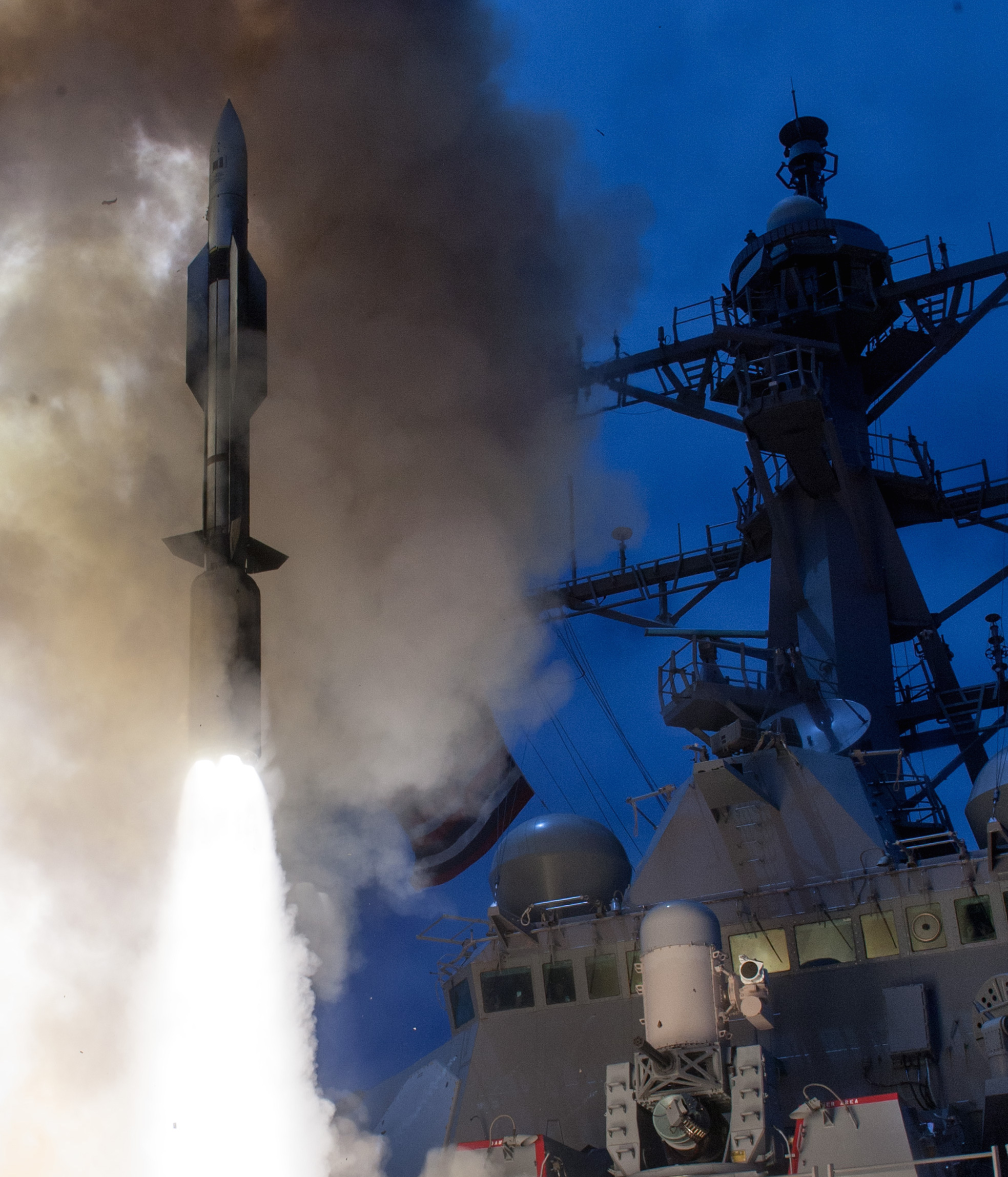
The U.S. Navy has approved the Raytheon Standard Missile-6 for use on guided missile destroyers and cruisers with older versions of the Aegis combat system, company officials told USNI News last week.
The SM-6 – a substantial upgrade in range and the ability to seek out targets over the older SM-2 – is the first weapon to be tied into the service’s emerging Naval Integrated Fire Control – Counter Air (NIFC-CA) scheme as part of Aegis Baseline 9 upgrades to the Navy’s guided missile destroyers and cruisers.
The SM-6, in a NIFC-CA context, could ingest targeting information from an off-board sensor – like an E-2D Advanced Hawkeye – and attack a target beyond the range of the radars on the ship.
However, the SM-6s used with the older Aegis combat systems wouldn’t be able to take advantage of the remote targeting capability in NIFC-CA, Naval Sea Systems Command told USNI News on Monday.
What SM-6s bring to the older combat systems – starting with Baseline 5.3 – is an improved set of seekers and a greater range, Mike Campisi, Raytheon’s SM-6 senior program director, told USNI News last week.
“There was a lot evaluation that went on between the Navy and ourselves. The conclusion was that we need to release SM-6 to ships that have Baseline 5.3,” Campisi said.
“It has active and semi-active [seekers] You can utilize that capability and SM-6 has far longer legs than an SM-2. You get the long-range and you get the high degree of discrimination and you get the active mode.”
It’s unclear what the timeline will be for integrating the SM-6s with the older Baseline 5.3 ships.
Raytheon has delivered 160 SM-6s to the Navy so far ahead of an anticipated full-rate production in April. All told, the Navy could acquire up to 1,800 SM-6s.
The company and the service are also testing SM-6s as a counter to ballistic missiles in a so-called “sea-based terminal” configuration – missile threats that are in the final portion of their flight before hitting a target.
“We are talking about the sea-based terminal mission which is testing this year and goes active next year,” Campisi said.
Evaluations of more uses for the missile are ongoing.
Campisi did not answer the question if the SM-6s could have a secondary anti-ship attack function – like one currently on the SM-2.
“My direct answer to that is, SM-6 has a large number of potential [uses],” he said.
“We are in active evaluation of many different missions, purposes for the vessel. That’s the best answer I can give you.”





